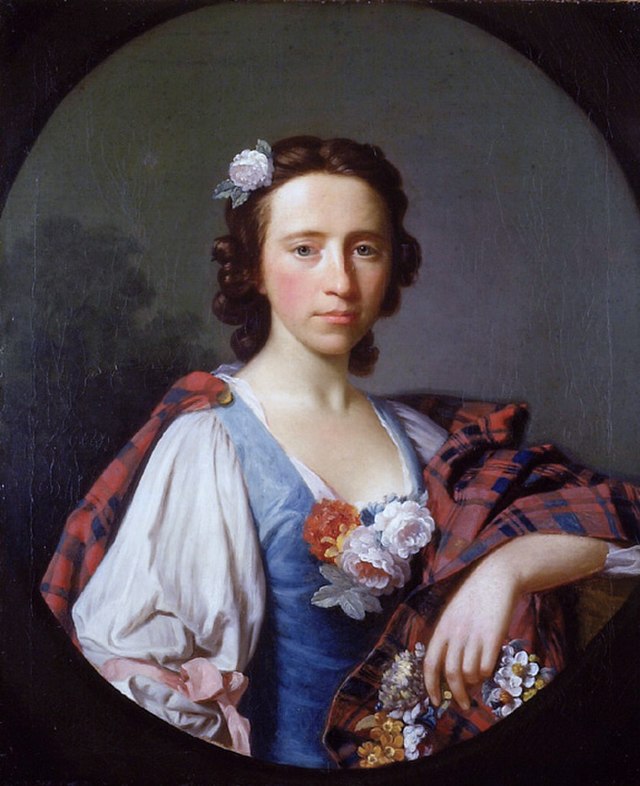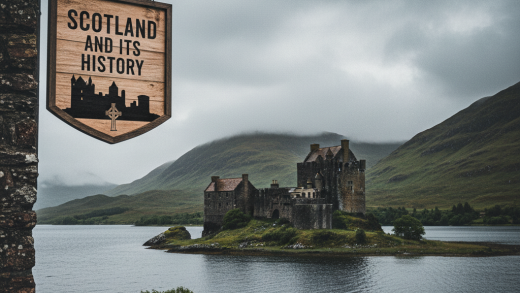
Flora MacDonald (1722–1790), a member of the Macdonalds of Sleat whose own family supported the government, became famous for helping Charles Edward Stuart (“Bonnie Prince Charlie”) escape government troops after his defeat at the Battle of Culloden in April 1746, claiming she did so purely out of sympathy.
Born in 1722 in Milton on the island of South Uist, Flora was the third child of Ranald MacDonald, a small landowner. After her father’s death and her mother’s remarriage in 1728, she was primarily raised by her cousin, Sir Alexander MacDonald of Sleat. Despite her island origins, her family was part of the Presbyterian majority, though some island MacDonalds remained Catholic.
In June 1746, while visiting Benbecula, Flora was approached by a companion of Prince Charles, Captain Conn O’Neill, for help. Using her connection to her stepfather, Hugh MacDonald (who commanded the pro-government militia controlling Benbecula), she secured passes for herself, a boat crew, and two servants, one of whom was the Prince disguised as an Irish maid named “Betty Burke.” After landing on Skye on June 27, Charles was advised to drop the disguise and was quickly passed on to the island of Raasay; Flora remained on Skye, and they never met again.
Two weeks later, the boatmen confessed, leading to the arrest of Flora and MacDonald of Kingsburgh. She was held in the Tower of London but was released under a general amnesty in June 1747. Sympathizers, including Frederick, Prince of Wales (the heir to the throne), raised over £1,500 for her; she allegedly told the Prince she would have offered the same charity to him.
She married Allan MacDonald, a British army captain and Kingsburgh’s eldest son, in 1750. They first lived at Flodigarry, Skye, and later inherited the family estate. The writer Samuel Johnson, who met her in 1773, described her as having “soft features, gentle manners, kind soul and elegant presence” and later wrote the inscription on her memorial.
Allan’s poor business sense and a rent dispute led the couple to emigrate to Anson County, North Carolina, in 1774. During the American War of Independence in 1775, they supported the British Loyalist cause; Allan raised and commanded the Anson Battalion but was taken prisoner after the Battle of Moore’s Creek Bridge in February 1776.
In April 1777, the family’s American property was confiscated. After Allan was released in September 1777, he was posted to Nova Scotia, where Flora joined him in 1778.
Following a difficult winter in Nova Scotia, Flora took passage for London in September 1779, breaking her arm during the voyage. Ill health delayed her final return to Scotland until the spring of 1780. The compensation for their lost American estates proved insufficient for them to settle in Nova Scotia, and Allan returned to Scotland in 1784. They eventually settled on the tack of Penduin. Flora died in 1790 at the age of 68 and was buried in Kilmuir Cemetery. They had seven surviving children; one son, John, made a fortune in India, enabling his parents to live their final years in comfort.
Discover more from WILLIAMS WRITINGS
Subscribe to get the latest posts sent to your email.





Were there more than on clan of MacDonald back then? I ask because Flora was a MacDonald both before she got married and after that.
hiya, yeah there were hundreds of variations, back then, thank you for you visit friend..